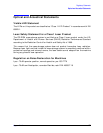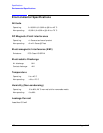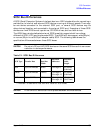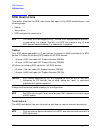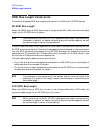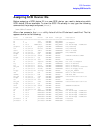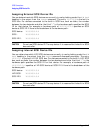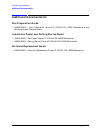
Appendix C 135
SCSI Connections
SCSI Bus Differences
SCSI Bus Differences
A SCSI (Small Computer Systems Interface) bus is an IEEE standard bus for connecting a
workstation to internal and external SCSI devices running at different speeds. There may
be one device connected to the external SCSI port, or several SCSI devices may be
daisy-chained together and connected to the external SCSI port. Examples of these SCSI
devices are 4 mm DDS-format tape drives, CD ROM drives, and hard disk drives.
The J6000 has a single dedicated external SCSI buswhich supports both low voltage
differential SCSI (LVD) and single-ended SCSI. The J6000 will also support wide (68 pin)
or narrow (50 pin via a 68-50 pin adapter cable) SCSI. The following table shows the
specification differences between these SCSI buses.
CAUTION
Do not mix SE and LVD SCSI devices on the same SCSI bus as this can cause
reduction in device performance.
CAUTION
A narrow SCSI device can not be placed between two wide devices.
Table C-1. SCSI Bus Differences
SCSI Type Transfer Rate Data Bus
Width
Maximum
Addresses
1
1. Address 7 is reserved for host controller use on all SCSI buses.
Maximum
Cable
Length
NSE Up to 20 MB/sec 8 bits 0 through 6 3.0 meters
(9.84 feet)
UWSE Up to 40 MB/sec 16 bits 0 through 6
8 through 15
3.0 meters
(9.84 feet)
LVD Up to 80 MB/sec 16 bits 0 through 6
8 through 15
12 meters
(39.37 feet)



